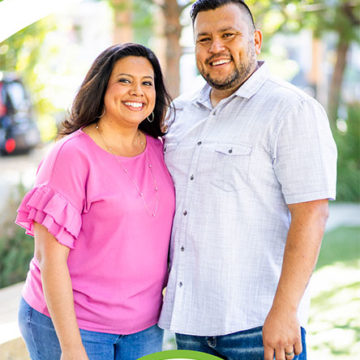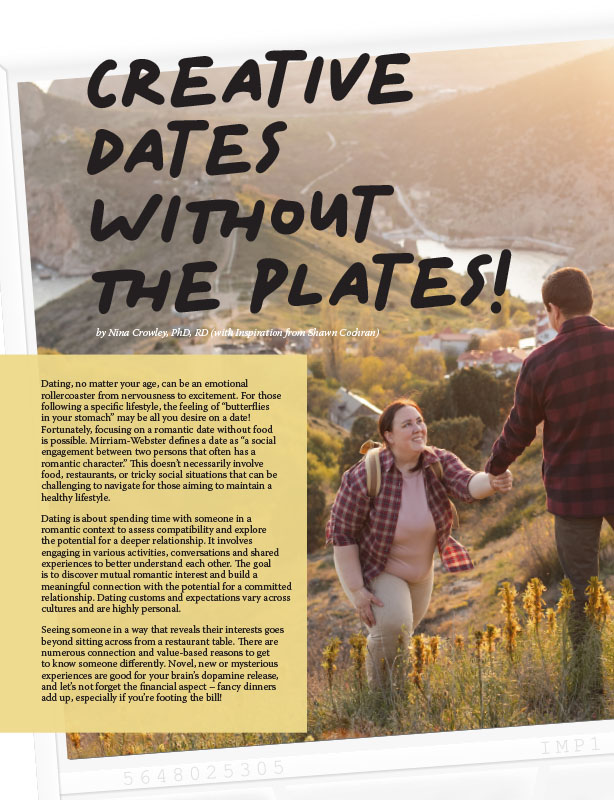How to Move with More Ease and Less Pain


by Liz Dumont Proctor, CPT, Behavior Change Specialist
Fall 2021
The weight-loss journey is difficult on all fronts. To succeed long term, we have to change our relationship with food. But, just as importantly, we need to change our relationship with movement. Embracing a physically active lifestyle contributes to sustained weight-loss and overall better health in several ways. In addition, it maximizes your overall quality of life.
Moving and Pain
One of the biggest challenges to increasing physical activity can be the fact that we have pain. Pain can stop even the most motivated people from moving forward with exercise. Being in pain can make it extremely difficult to make movement a priority. Our natural reaction is to avoid movement that causes pain, leading to moving less and sitting more.
If we do move, we may do so differently to avoid pain. For example, we may begin to walk with a limp. Instead of climbing the stairs right over left, we may start leading with one leg only.
Understanding your pain, where it is in your body and how to fix it is crucial for living a physically active lifestyle.
What is Pain?
Pain is an unpleasant sensory and emotional experience associated with actual or potential tissue damage. Pain’s purpose is to warn the body of a threat. Our brains ‘decide’ when to send a pain signal. Most of the time, our brains ‘decide’ appropriately when or when not to send the pain signal.
However, there are instances when the brain will send a pain signal when there is no actual tissue damage or threat. Conversely, we can experience tissue damage and the brain will not send a pain signal. Have you ever had an experience where you found a cut but do not remember how you got it because you never felt pain? Sometimes, our brains do not send the appropriate signal.
The bottom line is that pain does not exist until our brains tell us when we are in pain. Sometimes our brains produce pain signals even when there is no associated tissue damage!
What is Chronic Pain?
Chronic pain is pain that carries on for longer than 12 weeks despite medication or treatment. This is the most common type of pain that affects daily quality of life. Chronic pain can be rooted in an injury or other medical condition but can carry on long after the injury has healed. With chronic pain, the brain tends to sense pain when there is no real threat or tissue damage. In the most basic terms, the brain is cued for pain.
For this reason, pain does not necessarily provide an accurate measure of the state of the tissue. Studies show that the longer we have pain, the better the brain is at sending the wrong pain signals, even in the absence of a real threat. Why and how this can occur is beyond the scope of this article. Still, it is important to understand that if chronic pain keeps you from being more active, it is important to identify it, seek out information about its causes and plan to mitigate it.
The major areas of the body that are common areas of chronic pain include:
- Lower back
- Knees
- Feet and ankles
- Hips
- Shoulders
- Neck
In my experience, these are two of the most common causes of chronic pain:
- Poor posture
- Sedentary lifestyle
*Note: There are many serious conditions that can cause chronic pain such as Multiple sclerosis (MS), fibromyalgia, neuropathy or previous injuries. These conditions require separate and unique assessments when it comes to mobility and are not addressed in this article.
Poor Posture
Poor posture puts muscles and joints out of alignment, causing wear and tear on the joints over time. Some muscles become overstretched while others become over-tightened. Both of these conditions can contribute to chronic pain. Many people develop poor posture that results in in an overall forward lean and forward head tilt. The result of the forward lean is that the body’s weight is distributed forward over the feet and knees, contributing to arthritis in the feet, ankles, knees, hips and back.
Primary muscles that contribute to poor posture and increased pain include:
- Lower gluteal/buttocks
- Quadriceps & hip flexors (front of upper leg-thigh)
- Lower abdominals
- Lower back muscles
- Mid and upper back muscles
Good posture represents homeostasis for the body where the body can operate pain-free. Good posture aligns the skeleton straight up and down with no forward lean. The body’s weight is carried through the buttocks into the heels. With good posture, all of the body’s muscles are in balance, providing correct support to the body’s joints. None are too tight or too weak. The key to pain-free movement is to move the body towards good posture.
Sedentary Lifestyle
A sedentary lifestyle is a lifestyle dominated by sitting time and is a prescription for poor posture, joint weakness and pain. Too much sitting cuts off blood supply to the joints and contributes to imbalanced muscles. In addition, chronic sitting creates tightness in the upper thighs and weakness in the buttocks and lower abdominals. These conditions combine to create the forward-lean posture that contributes to chronic pain.
How to Safely Begin Increased Activity with Pain
If you have pain, how do you begin to move without making it worse? How do you learn to move confidently to improve movement and to reduce pain?
Knowledge is power. The most important first step in figuring out your pain is to get a medical evaluation to determine the source. Getting an assessment can determine if the pain is originating from a problem in the actual joint hardware or from the supporting connective tissues around the joint (muscles and tendons).
The information obtained from a specialist can be used to build the right program moving forward. It can help professionals (physical therapists or personal trainers) help you navigate movement to increase your mobility, strength and stamina while decreasing your anxiety!
For example, if you are experiencing knee pain and are told by a medical professional that your knee shows signs of arthritis, you may have a great deal of anxiety. Your natural inclination may be to avoid using the joint in an effort to preserve or protect it from further deterioration.
The problem with this way of thinking is that lack of movement actually contributes to joint deterioration and increased pain.
Joints thrive on movement. Movement is blood flow to the joint and surrounding tissues. Blood flow equates to joint lubrication, which translates to improved mobility and strength as well as decreased pain. Exercising the muscles around the arthritic joint can provide the joint with greater strength, stability and mobility.
Try the exercises below to improve your posture and ease your chronic pain.
Sit to Stand
This simple exercise uses the lower body the way it was engineered to work. It strengthens the entire lower body. You may need to hold onto something until you build enough strength to complete the exercise without holding on. The goal is to work up to 10 bridges without stopping in the beginning. It is perfectly appropriate to complete 2-3 in a row, then rest and repeat until you have completed a total of 10.
Equipment needed: A sturdy chair (preferably not a sofa or recliner)
Steps:
-
- Sit towards the end of the chair with your feet on the floor. Try to place the feet as close to under the hips as possible.
- From here, push through your heels and rise to a standing position.
- Once standing, squeeze your lower buttocks and pull your lower abdominals in and up. In other words, complete the last three steps of moving into good posture that I gave earlier.
Bridges
Both bridges and pelvic tilt exercises require you to lie on your back. If getting on the floor is too difficult, you can easily complete these on a bed. This exercise strengthens the lower buttocks and the abdominals.
Equipment needed: None
Steps:
-
- Lay on your back with your knees bent and your feet hip-width apart
- From here, push through your heels and raise your buttocks off the bed or floor.
- Try to raise your buttocks high enough so that your body is in a straight line between your knees and your shoulders.
- Lower down to the starting position and repeat 10 times.
Why Exercise with Chronic Pain?
Our bodies are a system of levers and muscles. We were engineered for movement. Movement pushes blood flow deep into joints lubricating them. The absolute worst thing for joints is sitting for prolonged periods of time. Too much sitting literally cuts off circulation to the joints and the supporting muscles.
Regardless of which area of the body is affected by pain or the cause of the pain, the following activities can help relieve chronic pain and improve stamina and movement:
- Stand More Frequently: Break up sitting time. Get up at least every hour and be on your feet for at least 2-5 minutes. Sitting may feel like a break, but it is actually stressing the cardiovascular system, the muscles and the joints. Standing is homeostasis for the body. Standing also turns on metabolism, generating a calorie burn ten times greater than sitting.
- Move into Good Posture: Because poor posture is the root cause of most pain issues, these steps will help move your body into good posture:
- Look at yourself sideways in the mirror.
- Shift your buttocks backward over your heels (this usually puts you into more of a forward lean).
- Squeeze your lower buttocks.
- Pull your lower abs in and up while squeezing your lower glutes.
- Lift up your rib cage (elevate your chest). This will automatically pull your shoulders back and down, reducing upper back pain and a forward head tilt.
Conclusion:
Managing pain or chronic pain can be intimidating. The important thing to remember is that joins thrive off of movement! Rather than fearing pain, talk to a healthcare professional about some exercises or activities that you can do to control and improve your pain.
About the Author
Liz Dumont Proctor, CPT, is a certified personal trainer and behavior change specialist with more than 25 years of experiencing in helping clients adopt and stick to permanent lifestyle changes that result in weight-loss, improved mobility and a better overall quality of life. Liz came to health and wellness as a result of her own weight-loss journey.
by Yelena Kibasova Spring 2024 The fitness world is evolving, with new trends and innovations that promise…
Read Articleby Zack Lucks, NASM-CPT, EMT Winter 2024 Working out with a loved one is a great way…
Read Articleby Nina Crowley, PhD, RD (with Inspiration from Shawn Cochran) Winter 2024 Dating, no matter your age,…
Read Article








